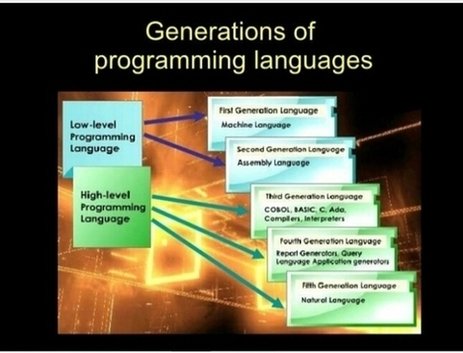_History Of Computer programming Languages_
In today’s busy world, a man is too lazy to do a work by himself. Rather he needs a machine to give some set of instructions to that machine and he expect some kind of positive result on the basis of his work.
A computer is a very powerful machine or an electronics device which is able to receive some information i.e. data from user and perform those set of instructions and produce respective output or result.
In the discission of computer science, we have to learn about many programming languages. Before learn about different programming languages we must have to know that what the programming language is.
Basically in the term of computer science, a programming language is a vocabulary & set of grammatical rules for instructing a computer or
computing machine to perform specific tasks on the basis of given instructions.
From very early days, computer has been improved on the basis of it’s quality & many programming languages has been introduced in this long period of time. Now a days, programming language is more understandable and friendly to the user than the previous. Communication path became easier by this kind of programming languages.
As of now, we came through five programming language generations.
The following are the types ~
1. First Generation Language { Machine Language }
-> Typically this is a Machine understandable language.
-> This is a low level language.
-> This language only consists two binary number i.e. 1 & 0.
-> As it consists only 1 & 0, so it is tough to understand and long winded for programming.
2. Second Generation Language { Assembly Language }
-> Basically it is a language for microprocessors and other programmable devices, in which there is a very strong correspondence between the language and the architecture’s machine code instructions.
-> Low level language.
-> approximately thousands of instructions are needed to perform the task.
-> This is comparatively more understandable than Machine level language.
-> To run this language Assembler program is needed to translate.
3. Third Generation Language { Imperative Languages }
-> An Imperative Programming Language consists of commands for the computer to perform.
-> This is a high level language.
-> Usually written in the following types ~
# COBOL ~> Business purpose.
# BASIC ~> For beginning programmers.
#FORTRAN ~> Scientific & Engineering purpose.
-> More useful than two early level languages.
4. Fourth Generation Language { Object Oriented & Event Driven Language }
-> This type of language refers to a specific programming language in which programmers define not only the data type of a data structure, but also the types of function.
-> This has some special characteristics like ~
Inheritance, Polymorphism, Classes etc.
-> Event driven i.e. the event triggers the outcome.
-> This eliminate many of the strict punctuation and grammar rules which can complicate the third generation languages.
-> Example=> C++, VB.NET.
5. Fifth Generation Language { Logic Languages }
-> Generally Logic Language is largely based on format logic. Any program written in this language is a set of sentences in logical form.
-> High level language.
-> This is a very strong language associated with artificial intelligence.
-> Expert systems and high quality constraints are used.
-> This is less dependent on programmer.
-> Example=> PROLOG.


